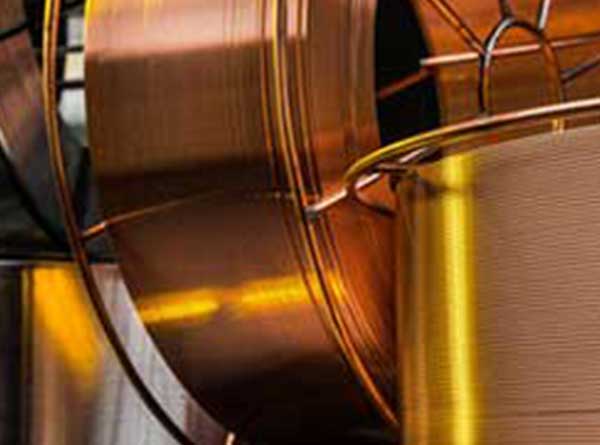
Power cables are cables used to transmit and distribute electrical energy. Power cables are often used in urban underground power grids, power station outgoing lines, internal power supply in industrial and mining enterprises, and underwater transmission lines across the river.
In power lines, the proportion of cables is gradually increasing. Power cable is a cable product used to transmit and distribute high-power electrical energy in the main line of the power system, including 1-500KV and above various voltage levels, various insulated power cables.
一、Basic introduction
The use of power cables has a history of more than 100 years. In 1879, American inventor T.A. Edison wrapped jute on a copper rod and threaded it into an iron pipe, and then filled it with asphalt mixture to make a cable. He laid this cable in New York and pioneered underground power transmission. The following year, the British Callender invented pitch-impregnated paper insulated power cables. In 1889, the British S.Z. Ferranti laid a 10 kV oil-impregnated paper insulated cable between London and Dartford. In 1908, Britain built a 20 kV cable network. Power cables are used more and more widely. In 1911, Germany started the development of high-voltage cables by laying 60 kV high-voltage cables. In 1913, the German M. Horchstedt developed a component phase shielded cable, which improved the electric field distribution inside the cable and eliminated the tangent stress on the insulating surface, which became a milestone in the development of power cables. In 1952, Sweden laid 380 kV ultra-high voltage cables in the northern power plant, realizing the application of ultra-high voltage cables. By the 1980s, 1100 kV and 1200 kV UHV power cables had been made.
二、Main categories
(一)According to voltage level
According to the voltage level, it can be divided into medium and low voltage power cables (35 kV and below), high voltage cables (110 kV and above), ultra-high voltage cables (275 to 800 kV) and UHV cables (1000 kV and above). In addition, it can be divided into AC cables and DC cables according to the current system.
1. Low-voltage cables: suitable for fixed laying on power transmission and distribution lines with AC 50Hz and rated voltage 3kv and below for power transmission.
2. Medium and low voltage cables: (generally refers to 35KV and below): PVC insulated cables, polyethylene insulated cables, cross-linked polyethylene insulated cables, etc.
3. High-voltage cables: (generally 110KV and above): polyethylene cables and XLPE insulated cables, etc.
4. Ultra-high voltage cable: (275~800KV).
5. UHV cables: (1000KV and above).
(二) Classified by insulating material
1. Oil-impregnated paper insulated power cable
Power cables insulated with oil-impregnated paper. Its application history is the longest. It is safe and reliable, with long service life and low price. The main disadvantage is that the laying is limited by the drop. Since the development of non-drip impregnated paper insulation, the problem of drop limitation has been solved, so that oil-impregnated paper insulated cables can continue to be widely used.
2. Plastic insulated power cable
The insulation is extruded plastic power cable. Commonly used plastics are polyvinyl chloride, polyethylene, and cross-linked polyethylene. The plastic cable has simple structure, convenient manufacturing and processing, light weight, convenient laying and installation, and is not restricted by the laying drop. Therefore, it is widely used as medium and low voltage cables, and has a tendency to replace viscous impregnated oil paper cables. Its biggest disadvantage is the existence of tree-like breakdown, which limits its use at higher voltages.
3. Rubber insulated power cable
The insulating layer is made of rubber plus various compounding agents. After being fully mixed, it is extruded on the conductive wire core and then heated and vulcanized. It is soft and flexible, and is suitable for occasions with frequent movement and small bending radius.
Rubber materials commonly used for insulation include natural rubber-styrene butadiene rubber mixture, ethylene propylene rubber, butyl rubber, etc.
三、Basic structure
The basic structure of a power cable is composed of four parts: core (conductor), insulating layer, shielding layer and protective layer.
1. Wire core
The core is the conductive part of the power cable, used to transmit electrical energy, and is the main part of the power cable.
2. Insulation layer
The insulating layer electrically isolates the core from the earth and the cores of different phases from each other to ensure the transmission of electrical energy. It is an indispensable part of the power cable structure.
3. Shielding layer
Power cables of 15KV and above generally have conductor shielding layer and insulating shielding layer.
4. Protective layer
The role of the protective layer is to protect the power cable from the intrusion of external impurities and moisture, and to prevent the power cable from being directly damaged by external forces.
Copyright © Hubei Hongle Cable Co., Ltd
Record No:鄂ICP备19017660号 Technical support:![]() onnuoIAD
onnuoIAD